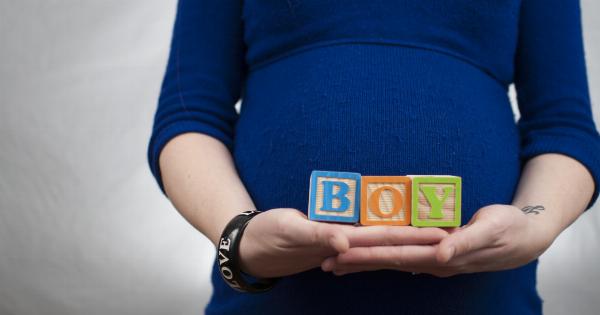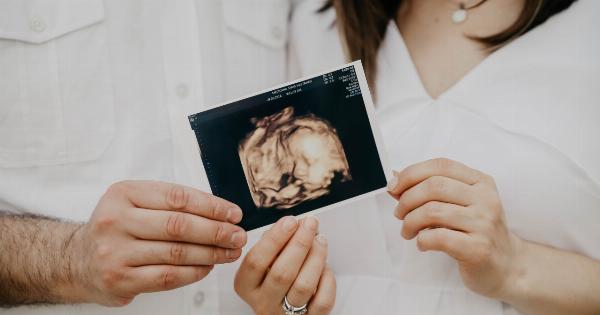Pregnancy is undoubtedly a miraculous journey filled with excitement and anticipation. As expectant parents eagerly await the arrival of their bundle of joy, one question that often arises is the gender of the baby.
While ultrasound technology can accurately determine the sex of the baby, there are numerous myths and old wives’ tales that claim to predict the gender based on physical characteristics, including the shape of the mother’s belly.
Understanding the Myth
Throughout history, pregnant women and their loved ones have attempted to decipher the gender of the baby through various means. One such belief is that the shape of the belly can provide insight into whether a woman is carrying a boy or a girl.
It is often said that carrying high indicates a girl, while carrying low suggests a boy.
Although this theory may sound intriguing, it is important to note that there is no scientific evidence to support this claim.
The shape and position of the pregnant belly are determined by a combination of factors, including the mother’s body type, muscle tone, and the position of the baby inside the womb. These factors have no correlation to the baby’s gender.
The Role of Genetics
When it comes to determining the gender of a baby, genetics play the dominant role. The sex of the baby is determined by the chromosomes carried by the father’s sperm. Women have two X chromosomes, while men have one X and one Y chromosome.
If an X-carrying sperm fertilizes the egg, the baby will be a girl, whereas a Y-carrying sperm will result in a boy. Therefore, it is the genetic makeup of the baby, rather than the shape of the belly, that ultimately determines the gender.
Other Factors Affecting Belly Shape
While the shape of the belly may not be indicative of the baby’s gender, it is influenced by various other factors. One such factor is the mother’s body type.
Women with a slender build may appear to carry higher, while those with a broader frame may carry lower. Additionally, a woman’s muscle tone and the strength of her abdominal muscles can also impact the shape of the belly during pregnancy.
Furthermore, the position of the baby within the womb can contribute to differences in belly shape. As the pregnancy progresses, the baby may move and change positions. This can result in variations in the appearance and position of the belly.
Additionally, the number of previous pregnancies a woman has had can also affect belly shape, as the muscles and skin may be more relaxed.
Common Belly Shapes and Their Meanings
While the shape of the belly may not reveal the baby’s gender, it can be fascinating to explore the different belly shapes and the meanings ascribed to them in various cultures and beliefs.
However, it is essential to approach these interpretations with an understanding that they are purely based on superstition and have no scientific basis.
- Carrying High: In some cultures, it is believed that carrying high signifies the birth of a girl. However, as mentioned earlier, this notion lacks scientific evidence and is solely based on cultural beliefs and personal experiences.
- Carrying Low: Similarly, carrying low is often said to indicate the birth of a boy. Again, it is crucial to remember that these claims are anecdotal and not grounded in scientific research.
- Carrying Round: A round belly during pregnancy is sometimes associated with carrying a girl. This belief may stem from the notion that a girl’s development is centered in the womb, leading to a fuller shape.
- Carrying Wide: On the other hand, a wide belly is sometimes linked to carrying a boy. This interpretation is often based on the assumption that a boy’s growth is concentrated more in the width of the belly.
- Carrying Pointed: In certain cultures, a pointed belly is thought to indicate the birth of a boy. This belief may be influenced by the perception that a boy’s presence in the womb creates a more protruding and pronounced belly shape.
The Importance of Scientific Methods
While it can be entertaining to explore the different interpretations of belly shape, it is crucial to emphasize the importance of relying on scientific methods for accurate gender determination.
Ultrasound scans during pregnancy, typically performed around the 18-20 week mark, offer a reliable and accurate way to determine the sex of the baby.
Ultrasound technology utilizes sound waves to create an image of the baby inside the womb. By examining the baby’s genital area, healthcare professionals can determine whether the baby is a boy or a girl.
This method is considered highly accurate, with success rates ranging from 95% to 99%.
Conclusion
The link between belly shape and baby gender is nothing more than a myth.
Despite the cultural beliefs and old wives’ tales, there is no scientific evidence to support the idea that the shape of the mother’s belly can predict the gender of the baby. The sex of the baby is determined by genetics and is accurately determined through medical methods such as ultrasound scans.





























